Duck Dive: Illinois Football 2025 Roster Preview
Special thanks to Steve Braun of Off-Tackle Empire for joining me to discuss Illinois’ roster on this week’s podcast:
The Illini were to many the biggest surprise of the Big Ten in 2024 (the Hoosiers notwithstanding, though better informed readers saw that one coming), as they won nine regular season games plus the bowl when they were projected to go 5-7 again just like 2023. Part of that had to do with facing a softer schedule (with the right timing) than it looked during the offseason; Steve and I discussed Kansas, Nebraska, and Michigan as paper tigers, at least at the moment when Illinois played them.
But the more perplexing thing is that on a fundamental strength and unit-by-unit basis, Illinois was essentially the same team as it was in 2023. Steve and I agreed that just about every position played out the way we predicted, if tilted to the happy version, while each of the major stats I track from charting were basically unchanged year-over-year (one is notably better but another is notably worse).
The most significant thing that seems to have changed was second-order wins – in 2023 Illinois was extremely chaotic, with nearly every game having the opposite outcome on the scoreboard as what my own and other advanced statistical models would predict from the play-by-play. But in 2024 that situation completely reversed, and the Illini perfectly swept the teams they were even slightly better than, while they never upset a team that outperformed them. I’m at a loss to explain what would make a team with the same coaching staff have such a total reversal in character. Steve suggested it was simply continuity and stability, which I’m willing to buy and if that’s true they’re in for even more in 2025. But it seemed like they should have gotten that effect in 2023 as well and they got the opposite (which was why I’d lost a lot of faith in Coach Bielema and sold stock in their win totals), so I’m left to wonder which season – chaotic 2023 or orderly 2024 – was the fluke. I suppose we’ll find out this Fall.
:no_upscale()/cdn.vox-cdn.com/uploads/chorus_asset/file/25966048/Illinois_offense.png)
The one area in which Illinois had an overall tick up in their fundamental performance is in explosive passing, and second-year starter #9 QB Altmyer’s NCAA passer rating flipped over the FBS median line, from 131.9 in 2023 to 144.0 in 2024.
However, overall passing efficiency as well as most down & distance success rates actually declined slightly for the Illini, and Altmyer’s raw completion percentage fell by four points. What’s going on here is that in 2023, Altmyer was injured and the backup John Paddock took over for the last three games plus some huge throws in a fourth – Paddock’s far superior deep ball accuracy buoyed the 2023 stats. When those are removed so Altmyer’s numbers alone can be compared year over year, then the picture gets a lot clearer.
As Steve and I discussed on the podcast, OC Lunney changed up the offensive profile from 2023, which had a combination of short throws and deep balls – those drove up the completion percentage but also the interceptions, because Altmyer’s mechanics don’t let him hit the latter consistently – and in 2024 it focused almost exclusively on intermediate throws over the middle and runs after the catch. These hit the sweet spot in Altmyer’s throwing motion and the receiving corps, and the offense nailed a lot of 15-20 yard plays without interception risk. At the same time, some changes to the offensive line bought Altmyer some more pocket time so he wasn’t scrambling so often.
All of this is to say that it’s my opinion that while Altmyer’s production profile changed, I don’t really think Altmyer did – I think the offense around him changed in structure, receiving options, and protection. From watching the tape I think these played to his strengths and downplayed his weaknesses, rather than him addressing or improving those strengths or weaknesses in a fundamental way. So even as Altmyer returns for his third season in Champagn, continued explosive passing success in 2025 as such would require those surrounding elements continuing or, as necessary, being replaced.
If Altmyer is unavailable, the rest of the room is three freshmen who are projects for down the line, and the likely backup #10 QB Hampton who transferred in for his final season from NIU. Hampton was a longtime second-stringer until he won the starting job for the Huskies last year, and, memorably, beat Notre Dame. His career, and the Huskies’ season, otherwise have been unremarkable, with a passer rating of 123.9, so while Steve made a crack about replicating Paddock’s performance as a MAC reliever, I have my doubts.
The running back room had four ballcarriers during meaningful play last year: Josh McCray, #21 RB Laughery, #3 RB Feagin, and #5 RB Valentine. McCray and Laughery split about two-thirds of the carries between them, and both had above average per-carry success rates at around 54% given the down & distance, though Laughery’s adjusted YPC number was significantly better at 6.0 vs McCray’s fairly average 4.8. However, McCray was much better as a pass-catcher, with 7.3 adjusted YPT vs Laughery’s abysmal 3.3 YPT. Laughery returns and will almost certainly be the lead back, while McCray has transferred to Georgia.
It’s difficult to parse the rest of the room. The Illini fed Feagin a lot in the first four FBS games prior to a catastrophic leg injury, so much so that he was on pace for 139.5 meaningful carries over the course of the full season instead of the 51 I have actually charted. But his per-carry numbers are terrible — a 39.2% success rate and 3.9 adjusted YPC — and it’s hard to understand why the staff was so enamored with him. It may be moot, as Steve told me that Feagin isn’t fully recovered at this point during Spring practices and he may need to switch positions … it was already difficult to believe he was a running back at 6’3” and 250 lbs.
Valentine was a true freshman in 2024 and his numbers are just as bad as Feagin’s at 40% success and 3.8 YPC, though as a young change of pace back he’s got more opportunity to grow and chances for better performance if the interior of the line can open better holes.
The question is what else the room might have in it. So far they’ve taken no additions in the portal and Steve told me they haven’t been connected with any names. They took two true freshmen, high 3-stars John Forster and Cedric Wyche, but they weren’t on campus for Spring. On the official roster, they converted a player I always thought it was peculiar to list as a running back due to his size at 6’4” and 240 lbs to a tight end, #23 TE Anderson, but Steve suggested he might go back to the RB room due to necessity and they’re clearly not afraid to play oversized backs (McCray is 6’1”).
The tight end unit could probably afford the loss, though one never knows with OC Lunney since he tends to go a bit overboard with the room size. Last year they got a portal addition who’d been at Eastern Michigan and then an FCS school, #14 TE Rusk, who was probably in line to be the new starter, but he got injured before the season began. That forced a blocking tight end, #85 TE Arkin, into action as their primary pass catcher for the position (Steve actually called this, and he crowed about it a bit on the podcast, though I noted his numbers weren’t great at only 4.0 adjusted YPT and 40% success, but it’s understandable since he’d never done it before), while an NAIA transfer, Carson Goda, became the blocking tight end and their low 3-star freshman recruit #89 TE Hollinger redshirted.
Goda has run out of eligibility and Anderson might go back to the RB room. But Arkin is back, Hollinger is a year older, they’ve added two more recruits this time, and Rusk should back to full health by the Fall even if they’ve been a little ginger with him in the Spring according to Steve. They’ve also added a fairly productive FCS transfer, #89 TE Stoffel.
It’s hard to pick out which one of these guys is going to actually be productive, since Arkin wasn’t great on a per-play basis and none of the rest has played on the FBS level at all. But with up to seven scholarship options, it’s difficult to imagine they’ll completely strike out. Illinois had the offense that they did last year with a modest-at-best Arkin and an occasional second TE blocking in 12-pers, so a step back would require both a total run of whiffs from the unknowns and some terrible injury luck, which isn’t a creditable scenario even if theoretically possible.
The wide receiver unit faces the biggest challenge in replacing its production, with the top two targets in Pat Bryant and Zakhari Franklin leaving for the NFL. Bryant was a longtime outside receiver and field stretcher for Illinois while Franklin was the transfer and additional dynamic playmaker they needed to open up the tweaked passing pattern in 2024. Those two got 80% of the meaningful receiver targets at about 56% success and around 9 YPT for each.
The few targets for the remaining returners make parsing them statistically somewhat difficult, though they do have some intriguing numbers. The inside receiver #80 WR Beatty got the most even though that was just 19 meaningful targets on the year, but he had comparable success rates and YPT figures to Bryant and Franklin, while the outside guys #17 WR Dixon, #8 WR Elzy, and #7 WR Capka-Jones (wearing jersey #15 last year) had too few meaningful targets for good statistical evaluation but some big raw per-catch numbers. Steve and I had the same takeaway subjectively from watching tape, which was that none really replicated the pure talent that Bryant and Franklin had, but Dixon and Elzy are both young guys with higher talent ratings out of high school so there’s time to show something.
There are three other returners in the room I haven’t seen at all, and Steve said to watch out for an apparently talented true freshman who showed out in practices, #11 WR Trimble. But we both think it’s most likely they straight replace the losses with a couple of transfers, Bryant with Ball St’s #0 WR Bowick and Franklin with West Virginia’s #13 WR H. Clement. Both are accomplished wideouts with big per-catch numbers and similar body types and playstyles. We’ll have to see if the chemistry pops with Altmyer and there doesn’t seem to be any alternate plan, but if it works out they might not miss a beat.
In 2023, the offensive line situation was highly unstable, and much of the conversation on the podcast was about how surprising that was for a Bielema-led team. Particularly problematic was that the tackles were completely ineffective — between the left who couldn’t anchor at all and the right side which kept rotating between multiple guys who were all meant to be guards – resulting in pocket breakdowns on close to 40% of dropbacks which ranked near the bottom of the Big Ten that year.
For the 2024 season, Illinois brought in a couple of transfer starters at the tackle spots from lower level schools, #74 LT Davis from New Mexico and #58 RT Priestly from the FCS ranks, and although Steve and I agreed it wasn’t exactly an optimal situation (pass protection graded out at 12th in the Big Ten), the simple fact that they were supposed to be playing tackle and stayed at their spots all season long was a substantial improvement. Both Davis and Priestly return in 2025 and the portal effect should disappear as such, so I’m expecting some improvement from even more stability in the Fall.
I would describe the guard situation as stable but uneasy. They return #64 C Jo. Kreutz for what’ll be his third year as starting center. He’s never missed a game in that time and has poor run-blocking but okay pass-blocking grades on my tally sheet, though without any blowout wins nobody else still on the roster has ever snapped the ball and I have no idea who if anyone is capable of filling in if Kreutz is unavailable.
Also returning are both of the guards who started the 2024 season, #73 LG Gesky (who wound up at RT in 2023 but it wasn’t his position) and #75 RG Henderson, now a redshirt sophomore. However, due to what Steve confirmed was dissatisfaction with the guard play during 2024, Illinois was experimenting heavily at both of those spots, and at midseason had pulled both of them, on the left for Hunter Whitenack and then MSU transfer Kevin Wigenton, and on the right Zy Crisler. All three of those replacements have transferred out for 2025, so Gesky and Henderson have their old jobs back.
They’ve taken two FCS portal additions at tackle. One was available for Spring ball, #72 OT Knapik, who was Idaho’s left tackle for the last couple of years; in reviewing his tape I thought he was well proportioned but significantly undersized for the job of handling Power-conference edge rushers. The other was added just before press time, Tyler McMillan, who started at left tackle for SEMO for half of last year. The rest of the room is pretty green, four prep recruits and three redshirt freshmen (one of whom is a converted d-lineman this year), plus redshirt sophomore #55 OL McMillen whose listed weight still seems undersized to take on the job, and none has seen the field at all. I suspect that the only immediately available playable backup is the senior #63 OL Schuster who came over from Juco powerhouse Hutchinson a couple of seasons ago, but even that’s a guess and I don’t know at which position since I’ve never seen him play.
With all five starters returning and stability all around them, the line is due for some incremental improvement, something Steve and I talked about has been sorely lacking in Illinois’ recent history. But the depth situation is unknown and possibly precarious, with no one else in the room having played any competitive FBS ball and few options to spread the risk around if something goes wrong.
:no_upscale()/cdn.vox-cdn.com/uploads/chorus_asset/file/25966047/Illinois_defense.png)
Some rush defense falloff was expected for Illinois as they’d lost four guys from the middle of the defense who signed with NFL teams after the 2023 season — Johnny Newton, Keith Randolph, Daniel Daxon, and Tarique Barnes — plus several more key senior contributors, but with a pipeline of backups who’d been playing and a flexible defensive system that had been in place for years, I didn’t think it’d turn out to be this bad. Steve and I marveled on the podcast that opposing offenses did anything other than run the ball at Illinois, especially considering the comparative strength of the pass defense, and we speculated that a good deal of the Illini’s overperformance in 2024 may have just come down to opponents squandering obvious chances to beat them.
In terms of making replacements to departures, Illinois’ front is in a stronger position this offseason than they were the last one – there’s only one starting-caliber loss from each of the four front positions (NT, DL, OLB, ILB), a pair of backups round out the entire departure list, and the replacements they have lined up look like comparable quality rather than stepdowns in talent. But they’re in a pretty deep hole for rush defense, and incremental improvement from stability and perhaps a couple replacements being a bit better than the departures don’t strike me as enough to climb out of it and get back to even an average level performance.
The structure is a 3-down double-eagle front, a modified version of former DC Ryan Walters’ system who was there in 2021 and 2022, and Steve said he anticipates no changes to the scheme in 2025. They’re losing both the starting nose tackle, TeRah Edwards (the NCAA denied his waiver for an additional year), and his backup Enyce Sledge who’s transferred out. They’ve gotten #99 NT Neal from Wisconsin, who’s graded out pretty well in a similar role for the Badgers for the last two years, so I think they’ll be fine there. He’ll need some relief though, and that’s tough to figure out. The best guess Steve or I had is an FCS transfer who came in last year, #92 DL Hunt — he played a different spot on the line but got taken out of the rotation after a few weeks for ineffectiveness — just because he should be available and since his dimensions at 5’11” and 305 lbs are more appropriate for a nose in this system. They might get better play out of the starter but worse out of the backup and/or need to leave Neal in longer; I think the net effect is a push.
The two fist-down spots on either side of the nose return one starter, #11 DL Bray, but lose the other, Dennis Briggs who’d come over from Florida State and generated the most penetration and havoc. There was a long tail of five backups after them, of which they only lose one to graduation, Ezekiel Holmes (although he had more havoc stats than Bray or any other backup did), plus Hunt to a position switch if we’re right about that. The returning backups are #8 DL Warren (who wore #55 in 2024), #52 DL Farrell, and #44 DL McCullom, each of whom were true or redshirt freshmen last year. They also have a couple more mid 3-star freshmen from the last two recruiting cycles, but I doubt we’ll see them due to the depth ahead of them and the transfers they brought in.
The two portal additions are #36 DL Durojaiye, a definitional journeyman backup who I believe will set a record playing for all four Power conferences in four years (Kentucky, West Virginia, FSU, and now Illinois), and #90 DL J. Thompson, a multi-year starter in a similar role at Wisconsin who missed 2024 with an injury. Assuming that Thompson is back to 100% I’m sure he’ll have a starting job, he graded out very well for the Badgers in 2022 and 2023 and better than anyone Illinois had last year. I don’t know about Durojaiye, his record doesn’t jump off the page but then neither do any of the returners’.
There shouldn’t be any depth problems here and as the balance of the room is going from pretty young to older I expect a bit of improvement. Thompson’s recovery is something of a wildcard, we’ll have to see if he can get back to his previous performance levels, but even if so I don’t think they have two of him and that’s what they’d need to majorly punch up this unit from one of the least effective ones at run-stopping in the league.
The two OLB spots — who have a demanding variety of roles in this defense, from rushing the passer to setting the edge against the run to dropping out into coverage in constant disguised pressures — lose one starter in Seth Coleman to graduation, but retained #17 OLB Jacas despite getting some good draft evaluations (Steve told me Illinois had to rally a lot of NIL spending to keep Jacas since his pass rush numbers are very attractive … though against the run and in coverage he’s been a bit of a liability, but that’s not what commands NFL dollars).
Both of the backups return, #3 OLB A. Bryant and #43 OLB Barna, though they played the upperclassman Bryant significantly more than the then-true freshman Barna, to the point where I’d call it closer to a 3- or 3.5-man rotation instead of the typical 4 (the center’s younger brother, #41 LB Ja. Kreutz, began the year with a bit of play in this rotation but in the back half of the season moved into the rotation as an off-ball backer and got a lot more play there). There are several other returners in the room who didn’t get any meaningful playing time despite being older than Barna; Steve and I both interpreted, given the general conservatism of the staff, this to mean that those guys are pretty unlikely to ever see the field.
The third Wisconsin transfer the front has added is #9 OLB Lowery; although the Badgers use outside backers somewhat differently than the Illini do it seems clear that he’ll slot in to Coleman’s place as starter. Given Lowery’s experience as a starter both last year for Wisconsin and the previous two for Syracuse he shouldn’t have much trouble producing at least at replacement level, and as a sophomore Barna should step up to a full rotational share and provide some more relief, so I’m expecting incremental improvement to what was a good pass rush. We’ll have to see about setting the edge against the run, since the entire unit graded poorly at it this may be structural.
The starter and main off-ball linebacker for the last two seasons has been #28 ILB Rosiek, while the second off-ball spot in the Walters-esque defense has switched between a box safety and another backer. That other backer for much of 2024 was primarily former walk-on Ryan Meed, but Rosiek got hurt and missed the last three games of the regular season plus the bowl which caused them to open up the rotation so the younger Kreutz got a lot of run, as well as a bit more for the backups #45 ILB Hood, #39 ILB Odeluga, and #42 ILB Zardzin.
Meed has graduated but Rosiek, Kreutz, and all of the backups return in 2025. They’ve also taken a Juco who has a higher talent rating in the 24/7 composite as a high 3-star than everyone else in the unit, #26 ILB Kante. Steve told me that Rosiek is sure to repeat as starter as the staff is unlikely to be shaken from a pick once made, which I definitely buy; he thinks it’ll be Odeluga as the second backer, though I’m not so sure on that one and think Kreutz or Kante might have a better shot.
This unit has the lowest grades of any on the defense for me, with Rosiek looking up at the rest of the squad for the last two seasons. They have the largest share of the responsibility for the problems in efficiency rush defense and limiting YPC on my tally sheet, as well as the primary cause of breakdowns in the Illini’s only underwater down & distance pass defense situation which is 2nd & medium. I pressed Steve on the matter and he said he completely agreed from his observations but the chances of the staff making any personnel or schematic changes were close to zero.
The box safety last year was #7 DB Bailey, who led the team in tackles despite not always being on the field due to some two-ILB configurations (Bailey would have even at the tackling pace Rosiek set prior to his injury had he stayed healthy). He returns in 2025 and grades out pretty well; I’m not sure who’d replace him if he were unavailable as he’d apparently get enough of a breather rotating out on those two-ILB sets, but I’d guess it’d be #2 DB Karriem as he looks to be the only DB with the size appropriate for it and has the highest talent rating in the room as a low 4-star.
If this defensive system continued Walters’ exact AMC style I’d call #14 DB X. Scott the slot or inside corner, but watching him as starter the last two years I think one of the main ways the Illinois staff has modified the approach is making his role into more of a nickel safety with zone coverage and run support responsibilities. He’s very good at it, one of the Illini’s main defensive assets and why they’ve experienced year-over-year growth in all three pass defense stats I track from charting as well as big jumps in situational 3rd & short / medium pass defense performance which I expect to continue with Scott’s return in 2025. He got a bit of relief from Tyler Strain at the beginning of the year, but Strain got sidelined midseason and #0 DB Resetich (wearing #26 at the time) took over as backup for both this spot and the high safety spot. Strain transferred out but Resetich returns.
The high safety position has been played by #10 DB M. Scott for the last two seasons (no relation to the nickel, though they’ve recruited the latter’s younger brother for 2025 who has a similar first name so the jersey nameplates are going to get very complicated, as Steve pointed out). It’s not quite the same sky-high position as in Walters’ structure, though that does still show up at times, but Scott does an excellent job in the role and the structure has a way of baiting opposing QBs into interceptions and pass breakups (eight and 17 total for the safety unit last year, respectively).
The outside corners started the year with #1 CB Patterson (then wearing #22) and Texas transfer Terrance Brooks who seemed like a high profile get, and three backups fighting for time in the rotation: CJ Bufkin, #5 CB Cox, and #6 CB Clarke (then wearing #25). A couple of games into the season, Brooks had failed to pan out and Cox had effectively taken over his reps, a few games after that the rotation collapsed further with Bufkin being relegated to garbage time so it was Clarke, Cox, and Patterson splitting time relatively evenly among the two spots. Those three all return and I expect something similar again in 2025, while Brooks and Bufkin have transferred out.
The entire secondary two-deep returns in 2025 (as well as almost all of the pass rush), most of whom were already veterans last year, as do the coaches and the structure that was responsible for the strength of the defense. If opposing offenses are rational they’ll never put the ball in the air against Illinois.
Share this content:
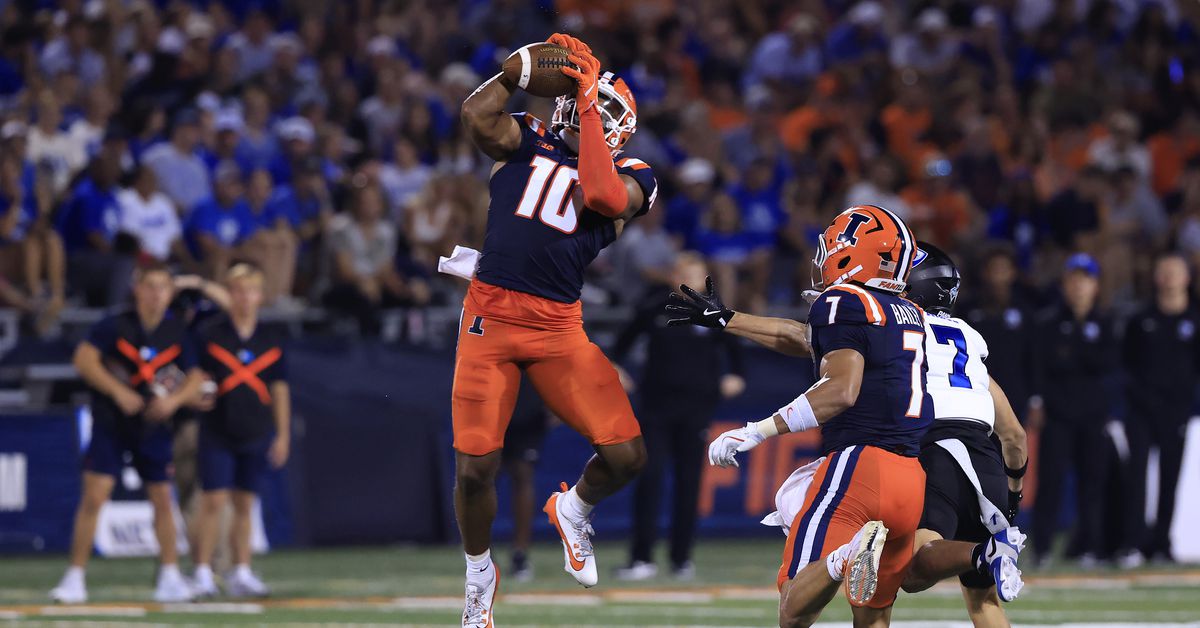

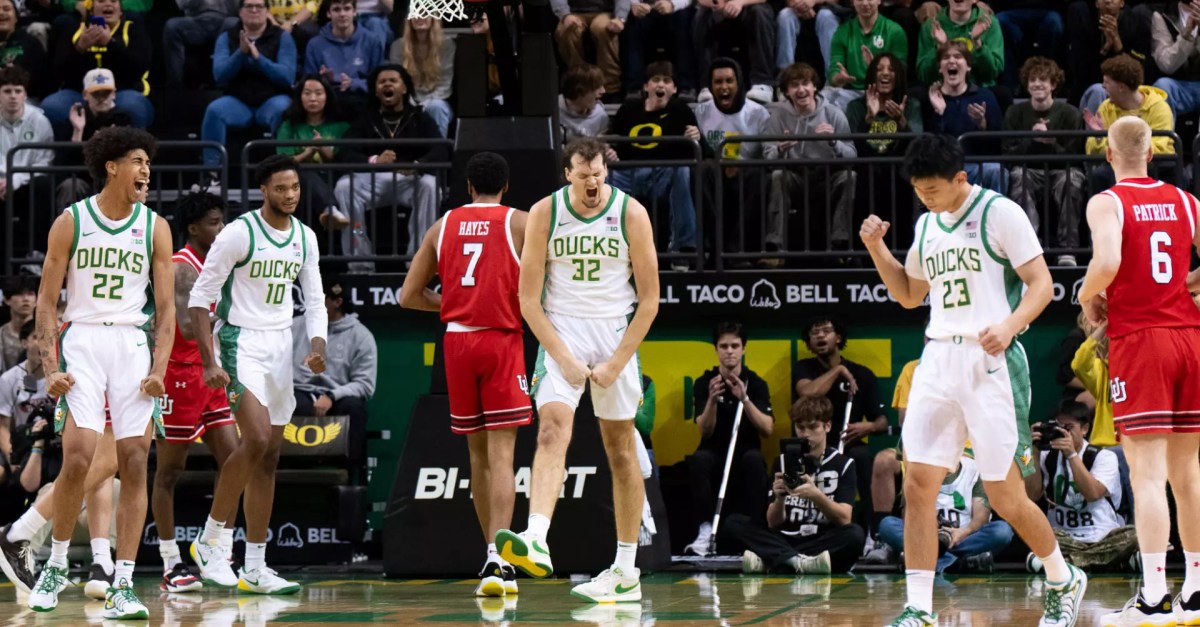
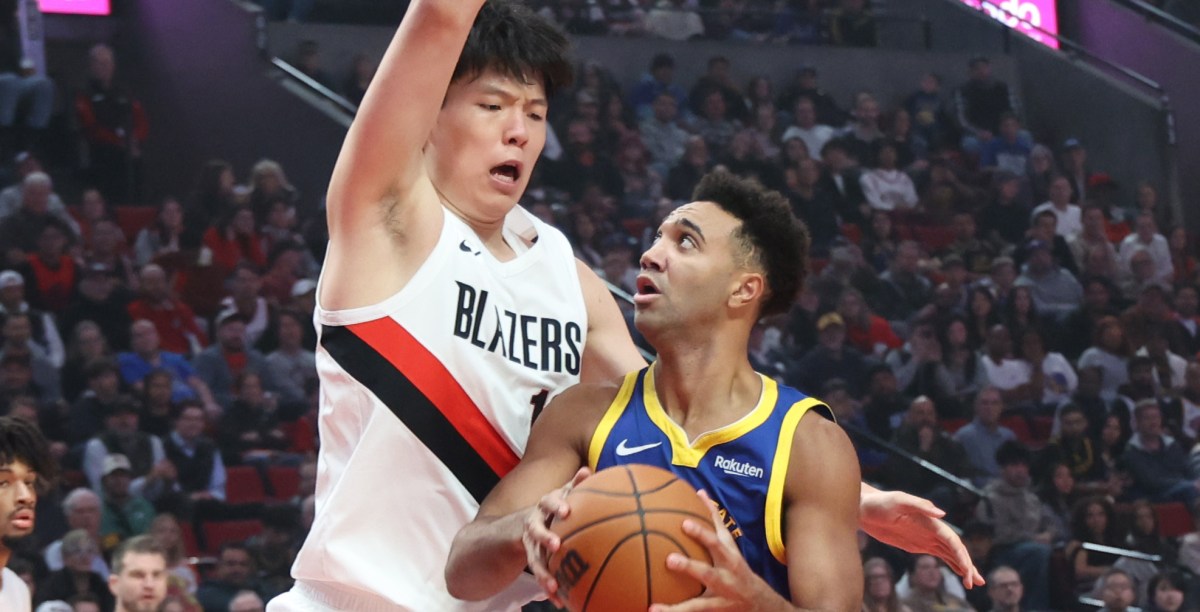
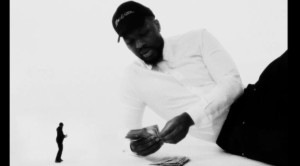


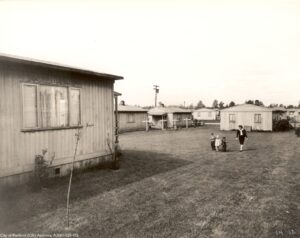
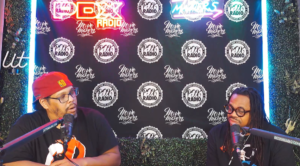





Post Comment